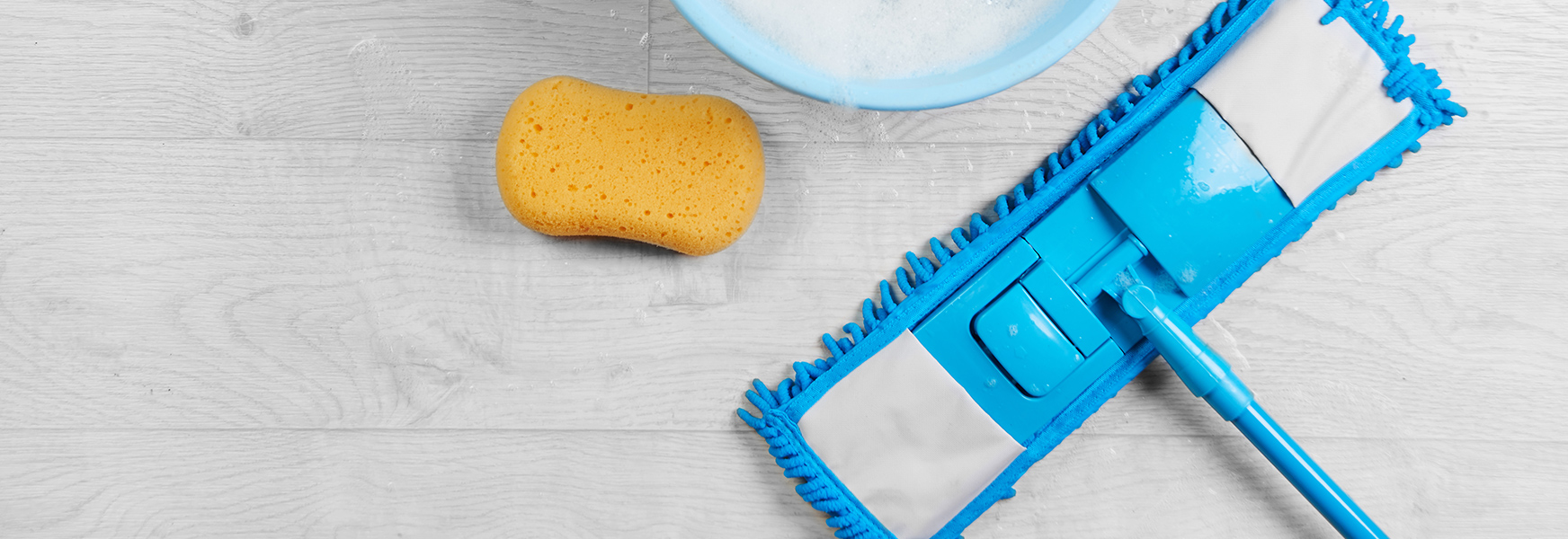Microfiber Miracle - Taking the SLIPS out of Slip and Fall Injuries

Hazards in the healthcare system seem to be multiplying every day. Notwithstanding the current pandemic exposures, the top three hazards which account for the most injuries are ergonomic hazards such as patient handling or material handling, physical hazards such as slips trips and falls, and psychosocial hazards such as violent acts. Slips, trips and falls (STF) account for the second largest number of lost workday (non-fatal) injuries in nursing care facilities (Bell, 2013) and pose a significant hazard for home care aides (Muramatsu, 2018) as well.
The healthcare goal is to care for people, both employees and patients. They are walking on the same floors and using similar entrances, lobbies, and hallways. The floor is the same for both, so if the slippery floor poses a hazard to the employee, it also poses a hazard for the patient (Quinn, 2016). A NIOSH sponsored project (Safe Home Care and Hospitals) uncovered cleaning methods that could be beneficial to healthcare workers in and outside of the hospital. These cleaning methods increase cleanliness and decrease the slippery floor hazards leading to slips, trips and falls.
One of those methods is a system of utilizing microfiber mopping to clean floors. When cleaning floors in healthcare facilities the foot traffic does not cease. Hopefully, there is signage to detour staff and patients around the wet area. Even when the signage does exist, circumstances may dictate that staff or patients cross that wet floor. This is when slip and fall injuries often occur.
If some critical steps of the floor cleaning process could be changed, the floor might pose less of a slip hazard. With microfiber mopping the floor is nearly dry as soon as it is cleaned. This reduces the risk of slipping injuries and accomplishes the task with much less chemical exposure to workers and lower water usage.
UMass Lowell (Safe Home Care and Hospitals program, 2015) published a list of benefits of the microfiber mopping system. Here is an overview:
- Microfiber is a tiny, strong, lint free synthetic fiber.The fiber holds enough water to clean while just damp, without the need of wringing.
- Decreases housekeeper ergonomic hazards by eliminating the handling of 40lb buckets of dirty cleaning solution.
- Reduces costs over time- the microfiber mop lasts approximately 400-500 washes (about 10 times longer than traditional cotton head mops). Also reduces chemical, water, time, and pollutants to the environment.
- Reduces injuries to patients and employees as the microfiber mop holds a minimum amount of liquid, and the light water residue left behind is often dry before leaving the room.
- The risk of cross contamination is reduced as the mop head is changed after every room, held in a dirty linen bag, never returned to the cleaning solution.
- Laundering the microfiber mop heads also decreases the burden on the laundry service, as the mopheads are light and dry quickly without utilizing the dryer.
As with any major change in processes, always proceed after evaluation and consideration. Here are a few additional resources:
- The American Hospital Association’sSustainability Roadmap for Hospitals website provides an overview of the benefits and issues to consider when implementing a microfiber mopping system.
- UMass – Lowell also gathered fact sheets for utilizing the microfiber system in cleaning homes.
- EPA Best Practices for Health Care Facilities – Using Microfiber mops in Hospitals (cost comparison with cotton head mops)
MEMIC’s Safety Director Resources:
- Surface Cleaning – Safety Minute overview
- Slips Trips and Falls Prevention – part 1
- Slips, Trips and Falls prevention – part 2
References:
Bell JL, Collins JW, Tiesman HM, et al. Slip, trip, and fall injuries to nursing care facility workers. Workplace Health Saf 2013;61:147-152.
Muramatsu N, Sokas RK, Chakraborty A, Zanoni JP, Lipscomb J. Slips, Trips, and Falls among Home Care Aides, a Mixed Methods Study, Journal of Occupational and Environmental Medicine. 2018 May 22; 60(9): 796-803.
Quinn M , Markkanen P, Galligan C, Sama S, Kriebel D, Gore R, Brouillette N, Okyere D, Sun C,Punnett L, Laramie A, Davis L. (2016) Occupational health of home care aides: results of the safe home care survey. Occupational & Environmental Medicine. 73:237-245. DOI: 10.1136/oemed-2015-103031. Available open access. Reader-friendly summary (pdf).
Safe Home Care and Hospitals program - https://www.uml.edu/Research/SHCH/About.aspx
Bell, J. L., Collins, J. W., Tiesman, H. M., Ridenour, M., Konda, S., Wolf, L., & Evanoff, B. (2013). Slip, trip, and fall injuries among nursing care facility workers. Workplace health & safety, 61(4), 147–152. https://doi.org/10.1177/216507991306100402 https://www.ncbi.nlm.nih.gov/pmc/articles/PMC4586109/
Muramatsu, N., Sokas, R. K., Chakraborty, A., Zanoni, J. P., & Lipscomb, J. (2018). Slips, Trips, and Falls Among Home Care Aides: A Mixed-Methods Study. Journal of occupational and environmental medicine, 60(9), 796–803. https://doi.org/10.1097/JOM.0000000000001355 - https://www.ncbi.nlm.nih.gov/pmc/articles/PMC6125748/
